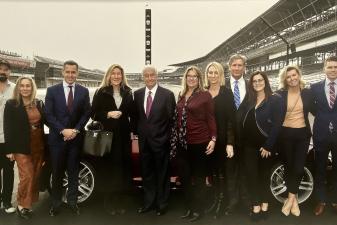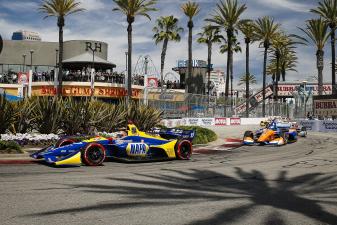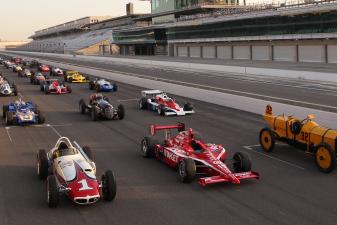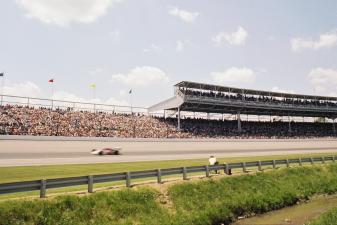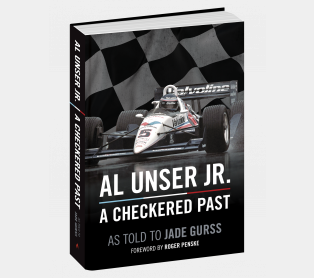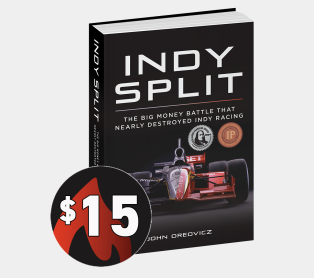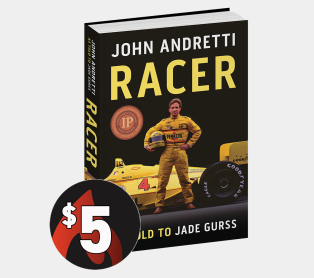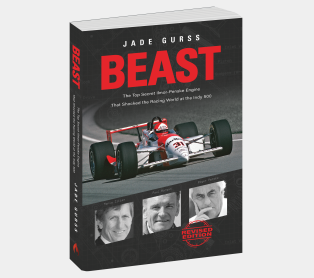Indy Split: Pack Racing Turns Deadly


Indy Split is a fascinating, authoritative and overdue account of the big money battle that nearly destroyed the sport of Indy car racing. The book traces the roots of Indy car racing’s dysfunction, which began in 1945 when Tony Hulman rescued the Indianapolis Motor Speedway from potential redevelopment. In this post, read about the dealy outcome of "pack racing". Photo: Indianapolis Motor Speedway.
Although he didn’t have any more 2011 IndyCar races lined up after his surprise victory in the Indianapolis 500, Dan Wheldon wasn’t short of work. He gained a new legion of fans with his color commentary on a few VERSUS race broadcasts, and he was tabbed as the development driver for the prototype ’12 Dallara that debuted at Indianapolis to mixed reviews.
Wheldon ran several shakedown tests with the new Dallara in August and September 2011, but before he could finish the development work on the new chassis, he was drafted back into the IndyCar Series as a competitor. Randy Bernard’s original plan to offer five non-Indy car drivers the opportunity to compete in the IZOD IndyCar Series finale at Las Vegas for a $5 million prize if they won the race had been recast as the GoDaddy IndyCar Challenge Bonus. But there just wasn’t that much interest in the offer. And where there was interest, logistical or contractual issues prevented those drivers from accepting the challenge. The three drivers who merited serious consideration were Alex Zanardi, Kasey Kahne, and Travis Pastrana.
The semi-contrived result was that surprise Indianapolis 500 winner Wheldon was given the opportunity to split the $5 million prize with a fan, provided that Wheldon piloted his Bryan Herta Autosport/Sam Schmidt Motorsports entry from the back of an expanded thirty-four-car field to win the Las Vegas race. “I’ve been just desperate, period, to get back in a race car since Indianapolis,” said Wheldon. “It’s going to be hard, though I have actually started last when I got loose in qualifying at Richmond when I was driving for Michael Andretti’s team and came through and won. Thank you for the opportunity, but please don’t expect any flips like Travis Pastrana does because I’m not into that. I’m going to keep it on all four.”
Those words, spoken a few days prior to the event, are haunting in retrospect. After starting from the back of the thirty-four-car field, Wheldon had moved up to twenty-fourth place when carnage unfolded on the eleventh of two hundred laps. Cars driven by James Hinchcliffe and rookie Wade Cunningham touched; Cunningham spun, and all hell broke loose. At least three cars went airborne, and Wheldon had no time to react before his car clouted the back of E.J. Viso’s car, launching Wheldon’s car into an aerial barrel roll. The car struck the catch fence with enough force to shear the roll hoop cleanly from the top of the Dallara chassis, and Wheldon’s helmet struck a 4.5-inch diameter steel post on the track side of the chain link fence, causing what INDYCAR called “unsurvivable injuries.”
“Pack racing,” a trademark of the early years of the IRL and a style of competition still championed by a small but vocal group of fans, had finally turned deadly.


